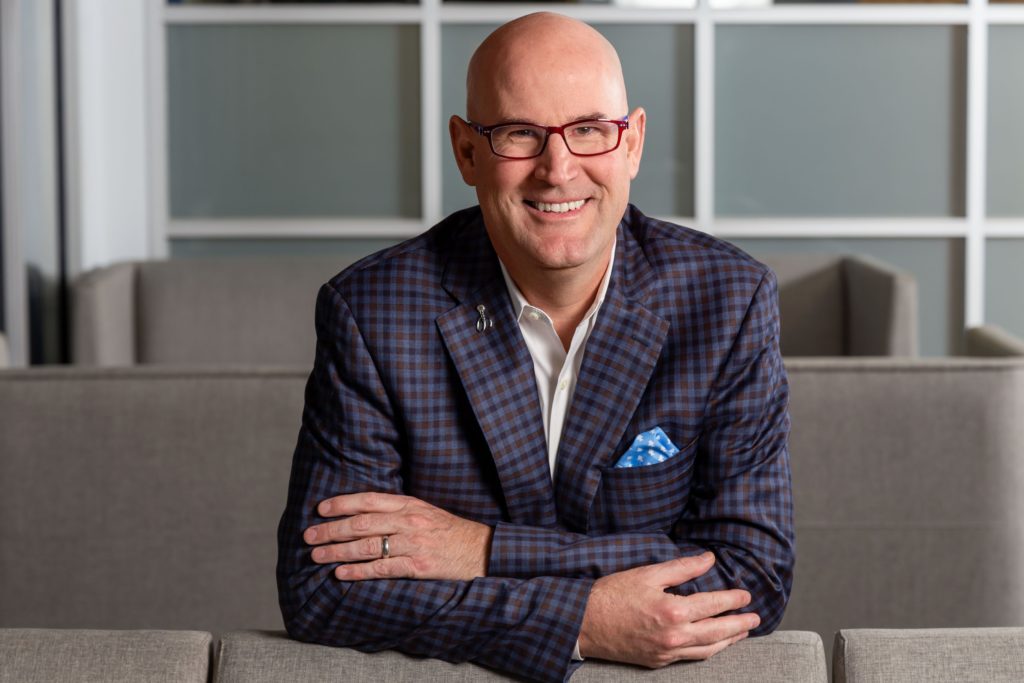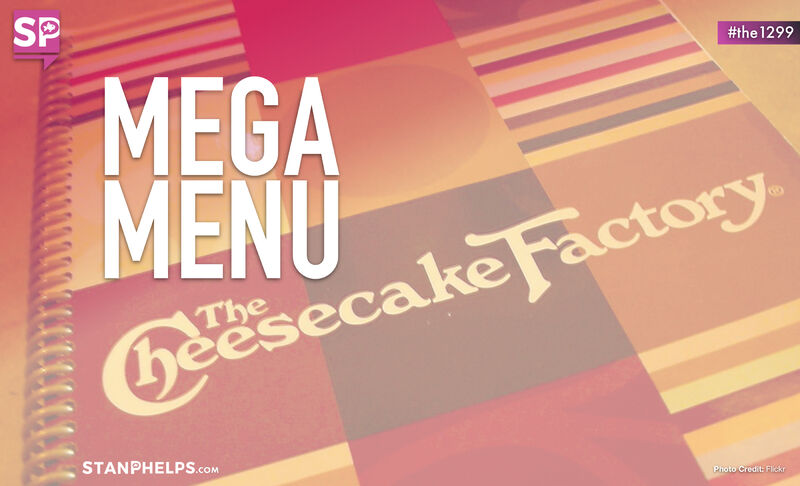“God, that menu. Too many options” shared Kate McKinnon about The Cheesecake Factory in the movie, “The Spy Who Dumped Me.”
When it comes to menu size, shouldn’t you keep it simple? Don’t paralyze customers with choice. Less is more right? Take for example In-N-Out Burger. Their entire menu has eight items. Or maybe not.
Too much is a flaw. In Pink Goldfish 2.0, David Rendall and I share the strategy of Lopsiding. Taking an apparent flaw and then doubling or tripling down on it.
Boasting 250 menu items, (including 85 different ways to order chicken and 50 different types of cheesecake) The Cheesecake Factory menu is nearly 6,000 words. Their notoriously massive menu consists of 21 oversized and spiral-bound pages of laminated bliss.
What makes the lopsided menu even more impressive is that they are a scratch kitchen. Everything (other than the cheesecakes) is made fresh onsite. Prep begins at 6 a.m. with over 700 ingredients to make the 250 items. There are over 160 sauces made daily.
The large menu had a purpose from the beginning. Founder David Marshall Overton shared with Thrillist that the strategy was basically: the more dishes, the better. If a couple was headed out to dinner and one person was craving Italian while the other wanted Mexican, they could both happily satisfy their appetites at The Cheesecake Factory.
The lopsided size of the menu makes it remarkable. In the words of Jay Baer and Daniel Lemin in their book “Talk Triggers,”
“Because the vastness of the restaurant’s menu is so unusual that it compels conversation among its patrons. Menu breadth is its secret customer-acquisition weapon—it hides in plain sight, in the hands of each and every diner. The menu at The Cheesecake Factory is a talk trigger: a built-in differentiator that creates customer conversations.”
Takeaway: More is sometimes more. The Cheesecake Factory’s lopsided menu leads to lopsided results. Pre-pandemic, their 220 restaurants earned almost $2.5 billion each year.
Follow me on Twitter or LinkedIn.

Stan Phelps walks the walk. He stands out in the sea of sameness by modeling his own Differentiated Experience (DX) message: Differentiation isn’t just about what you say, it’s about what you do and, more importantly, how and why you do it. Stan leverages his unique collection of 5,000+ case studies on customer, employee, and brand experience to engage audiences with informative learning-based experiences. He believes purposeful DX wins the hearts of employees and customers, and differentiation ultimately boosts loyalty, retention, referrals, and results.
Find Stan’s in-person and virtual keynotes, workshops, and Goldfish tank programs at StanPhelps.com.

